Asteroids |
Asteroids | |  Automatic translation Automatic translation | | Updated June 01, 2013 |
Of numerous small rocky called bodies asteroids are present in the solar system, an important part of them circulate in a ring, between the orbit of Mars and that of Jupiter (2 - 4 UA ( Symbol: UA) The distance averages of the Earth in the Sun. An UA is worth 149 597 871 km. It is a unity often used for the distances in the solar system, or for the space of two stars in a double system. ), In what the astronomers call the belt of asteroids, otherwise called main belt. It so marks the limit between the telluric planets and the gaseous giants. If the asteroids were "luminous", we shall see as all stars in the night sky. An asteroid is a not observable heavenly object in the bare eye because of its small size which varies some tens of meters in several hundreds kilometers in diameter. They are a part of our solar system and turn around Him. The objects of less than 50 m of diameter are called by meteorites. Those are not satellites of planets but fragments of the disk proto-planets which did not manage to group together in planets during their formation. Asteroids have a big importance in the understanding of the formation of the solar system, it is for that reason that the astronomers show a strong interest in the study of these objects.
The belt of asteroids was not discovered as such, we looked for the other thing, it is the effect serendipNeologism stemming from serendipity English, from Persian old man Serendip, name of Sri Lanka. Walpole (1754): the fact of discovering something accidentally and ingenuity while we are in search of something else. Merton ( 1945 ): the discovery luckily or ingenuity of relevant results for which we did not look. She relates to the rather common fact of observing an unexpected, absurd and major datum which gives the occasion to develop a new theory or to spread an existing theory. Charles Darwin ( 1953 ): quality which consists in looking for something and, having found the other thing, in recognizing that what we found has more importance than for what we looked..
The first asteroid was accidentally discovered 31 in December, 1800 by Giuseppe Piazzi, director, in the time, of the look-out observatory of Palermo (Sicily).
While observing the constellation of the Taurus, it perceived a not identified object moving very slowly in the night-sky. His colleague, Carl Friedrich Gauss determined the exact distance of this unknown object and placed this celestial body between planets Mars and Jupiter. Piazzi named it Ceres, of the name of the Greek goddess who makes take out the sap of the Earth and witch grows the young shoots in spring. Between 1802 and 1807, three other bodies were discovered: Pallas, Junon and Vesta. In 1868, 100 asteroids were known. The 1000th approved discovery took place in 1921 and 10 000th in 1989. In March, 2006, there were 129 436 approved asteroids. The NEAR Shoemaker probe (Near Earth Asteroid Rendezvous) was thrown on February 17th, 1996 by the NASA to study in detail Eros, one of the biggest asteroids Earth cruisers. This probe gave a complete cartography of Eros in 2000, it finally settled without damage on the asteroid, February 12th, 2001 and sent its last signal on February 28th, 2001. The space is far from being empty, it is sprinkled with dusts and with matter dating the creation of the solar system. | |
| Itokawa (25143) |
Characteristics |
| |
|
| Dimensions |
535 × 294 × 209 m |
| Escape velocity |
0.2 m/s |
| Temperature |
≈206 K |
| Aphelion |
1.695 AU |
| Perihelion |
0.953 AU |
| Semi-major axis |
1.324 AU |
| Eccentricity |
0.28 |
| Discovery date |
26 September 1998 |
| Category |
Apollo |
| Orbital period |
1.52 y or 556.355 d |
| Average orbital speed |
25.37 km/s |
| Longitude of ascending node |
69.095° |
| Argument of perihelion |
162.760° |
Asteroids and comets, metal and rocky objects, move in a vertiginous speed around planets and around our Sun. Meteorites and comets bombard our planet since the birth of the solar system. Although they seem wisely installed on their orbits between Mars and Jupiter, they are sometimes destructive and we owe them credibly the appearance of the life on Earth. Asteroids being our most close neighbors, they are somehow, bound to our fate. The total mass of all the asteroids of the main belt revolving around the Sun between Mars and Jupiter is estimated at 4×1021 kilograms, what amounts to approximately 5 % of the mass of the Moon.
We distinguish various categories: silicates (group s), the carbon (group c) and the metal (group m). The first ones consisting of minerals, the second of carbon and ice and the last ones of metals.
Asteroids are classified by groups according to their place within the belt of asteroids. We can quote the following groups: Hungarias, Floras, Phocaea, Koronis, Eos, Themis, Cybeles and Hildas which are named according to the main asteroid in the group). | | 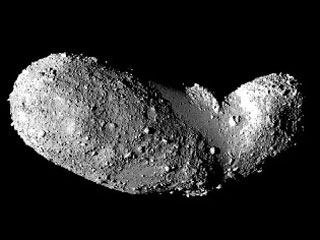 Image: The asteroid (25143) Itokawa is like Apollo (near-Earth asteroids), the image was taken by the Japanese probe Hayabusa in 2005. Probe arrived near the asteroid Itokawa September 12, 2005.'s Hayabusa probe, the Japan Aerospace Exploration Agency (JAXA), landed on the asteroid 19 November 2005 to collect rock samples. Back on Earth (2010). Photo credit (agency JAXA). |
Galileo probes, Near, Deep Space | | | | |
It has been not enough time since the man investigates closely these asteroids. Indeed, given their fast movements, probes would have had difficulty in approaching it. It is in 1991, October 29th, that the Galileo probe, heading for Jupiter, approached for the first time the asteroid: Gaspra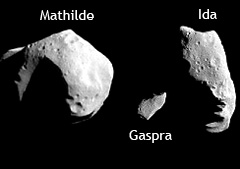 . The probe approached in 1 600 km, enough near to establish these dimensions in a precise way (20x12x11km, revealing 50 meters details. Almost two years later, on August 28th, 1993, Galileo met a second asteroid, Ida. Being then situated to 3 UA, they crossed themselves in km/s 12.4, separated one of the other one by 2400 km. This meeting revealed something very surprising, the presence of a satellite glancing through it as height as 100 km, baptized Dactyl. . The probe approached in 1 600 km, enough near to establish these dimensions in a precise way (20x12x11km, revealing 50 meters details. Almost two years later, on August 28th, 1993, Galileo met a second asteroid, Ida. Being then situated to 3 UA, they crossed themselves in km/s 12.4, separated one of the other one by 2400 km. This meeting revealed something very surprising, the presence of a satellite glancing through it as height as 100 km, baptized Dactyl.
February 17th, 1996, on Cape Canaveral, sound NEAR (for " Near Earth Asteroid Rendezvous ") took off in the direction of the asteroid Eros, the purpose being to be on the orbit to study it under all the angles during one year. It glanced through in the passage Mathilde in 1200 km in height. After a first failure in 1999, the probe returned and was on the orbit on February 14th, 2000 to settle on February 12th, 2001.
About at the same time, the Deep Space 1 probe was thrown in October, 1998 towards the asteroid Squall, by approaching as height as 15 km only, taking a multitude of photos. | | The Cassini-Huygens probe, heading for Saturn, photographed as for her Masursky.
The biggest asteroids known for the belt are Ceres, Pallas and Vesta. They are the only ones to have a average diameter superior to 500 km, thus the only ones to have an almost spherical geometry.
Indeed, from a 500 km diameter, a rocky celestial body can take a spherical shape.
The mass of the celestial body is sufficient to exercise a strength of gravitation superior to the strengths of cohesion of the matter.
The matter divides up thus naturally into ball under the effect of its own weight. Below 500 km in diameter, asteroids as Gaspra (15 km) or Ida (56 km), present much more irregular forms.
More solar system objects are small (asteroids, comets) and more they interest the scientists because they spread all their energy into space and kept intact materials, of the time of their "death", particularly organic molecules. Image: largest known asteroids (above). | |
| Asteroids |
Approximate
dimensions |
Discovery
date |
| |
|
|
| Ceres 1 |
974.6 km |
1801 |
| Pallas 2 |
582×556×500 km |
1802 |
| Vesta 4 |
572.6x557.2x446 km |
1807 |
| Hygiea 10 |
530x407x370 km |
1849 |
| Sylvia 87 |
384x262x232 km |
1866 |
| Hektor 624 |
370x195x195 km |
1907 |
| Europa 52 |
360x315x240 km |
1858 |
| Eunomia 15 |
357x355x212 km |
1851 |
| Davida 511 |
357x294x231 km |
1903 |
| Interamnia 704 |
350.3x303.6 km |
1910 |
| Camilla 107 |
344x246x205 km |
1868 |
| Juno 3 |
320x267x200 km |
1804 |
| Cybele 65 |
302x290x232 km |
1861 |
| Hermione 121 |
268x186x183 km |
1872 |
| Euphrosyne 31 |
255.9 km |
1854 |
| Chariklo 10199 |
248x258 km |
1997 |
| Iris 7 |
240x200x200 km |
1847 |
| Psyche 16 |
240x185x145 km |
1852 |
| Daphne 41 |
239x183x153 km |
1856 |
| Kalliope 22 |
235x144x124 km |
1852 |
| Amphitrite 29 |
233x212x193 km |
1854 |
|
Zones with asteroids | | | | |
Between Mars and Jupiter (from 300 to 600 million km of the Sun). Asteroids are mainly situated in the main belt, between the orbits of Mars and Jupiter. We find several hundreds of thousand listed objects there. All its objects would have been able to form a planet in this zone but the gravitational disturbances of Jupiter did not allow it. Jupiter played defender's role of the life on our planet. Without Jupiter, the bombardment on Earth would be 1000 times as frequent. | | In the belt of Kuiper (between 35 and 100 UA of the Sun). This zone contains ice-cold objects, and are not thus strictly speaking asteroids. This belt is rather a crèche of comets. The first member is discovered in 1992. We count a little more than 1000 today. The British call the asteroids of this type of "cubewanos". The biggest identified until today is Quaoar (1280 km in diameter). | | In the cloud of Oort (between 20000 and 150000 UA neighborhood). This zone of the sky, the remainder of the original nebula, would contain billions of nuclei of comets and would be the source of most of the new comets which enter the central regions of the solar system. The Cloud of Oort constitutes the reservoir of comets in long period. It is one diameter 1000 time superior in that of the solar system that we know with the 8 planets. |
Ceres (1) | | | | |
Ceres Ceres The first bare asteroid is. We recognize him the definition of dwarfish planet today, since the new definition of the international astronomical Union of August, 2006. With about a diameter 950 km, Ceres is also the biggest member of the belt of asteroids situated between the orbits of Mars and Jupiter.
Was accidentally discovered.
Piazzi tried to observe a star listed by Francis Wollaston under the name of Mayer 87 because she was not in the position given in the zodiacal catalog of Mayer (it turned out afterward that it was in fact about Lacaille 87).
On the place, he observed an object moving on the sky, that he believed at first to be a comet. Image: Ceres view from the Hubble Space Telescope (ACS). The contrasts were raised to reveal the details of the surface. Credit NASA, ESA | | 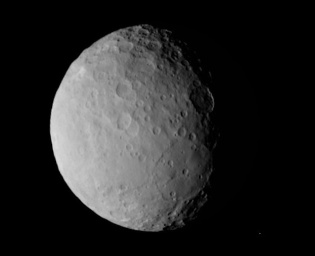 | |
| Ceres |
Characteristics |
| |
|
| Aphelion |
445 280 000 km |
| Perihelion |
382 520 000 km |
| Semi-major axis |
413 910 000 km |
| Equatorial diameter |
974.6 km |
| Polar diameter |
909.4 km |
| Axial tilt |
3° |
| Mass |
9.445×1020 kg |
| Average orbital speed |
17.882 km/s |
| Eccentricity |
0.075797 |
| Orbital period |
4.6 yr or 1680.99 d |
| Synodic period |
1.278 yr or 466.7 d |
| Inclination to Ecliptic |
10.593° |
| Longitude of ascending node |
80.3276° |
| Argument of perihelion |
72.2921° |
| Right ascension |
291° |
|
Pallas (2) | | | | |
Pallas was discovered March 28, 1802 in Bremen by the German astronomer Heinrich Wilhelm Olbers (1758-1840) while he took care of observations to locate and determine the orbit of the asteroid Ceres, discovered the previous year by Giuseppe Piazzi (1746/1826), the average forecast of the great mathematician Carl Friedrich Gauss (1777-1855).
Pallas is the second largest asteroid in the main belt (526 km mean diameter) and the second which was discovered.
The object is according to U.S. researchers, a protoplanet, i.e. a body massive enough to form a planet, but frozen in its evolution by lack of materials.
Pallas was named in honor of the Greek goddess of wisdom, science and arts. | | Image: With a diameter of 570 x 525 x 482 km, Pallas was the second largest known asteroid belonging to the asteroid belt between Mars and Jupiter.
Pallas running on a highly inclined orbit of 34.8 degrees. Its orbital period is 4.6 years. With an eccentricity of 0.23, its distance varies from 2.14 AU at closer to the Sun and 3.41 AU away.
High resolution images of the Hubble Space Telescope, we present here a model of an asteroid almost round. | | 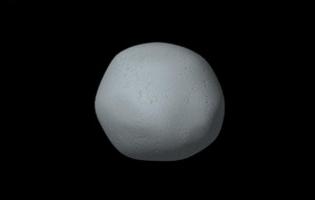 |
Juno (3) | | | | |
Juno is the third asteroid discovered in the Solar system, Juno ( 3 Juno) pull its name of the woman of Jupiter. Juno, is discovered by Carl Ludwig Harding to the look-out observatory of Lilienthal, near Bremen, on September 1st, 1804 by means of a simple telescope of 5 cm of opening.
The orbit of Juno changed in 1839, maybe because of an impact. Images realized in adaptive optics in the look-out observatory of the mountain Wilson (United States) reveal that the small planet 240 km in diameter was totally deformed by a collision which created an immense crater of a size of 100 km looking like a bite.
A system of adaptive optics allowed to obtain an outstandingly clear sight of Juno, by reducing the interferences with the ground atmosphere. (Sallie Baliunas and al.) | |
| Juno |
Characteristics |
| |
|
| Dimensions |
320x267x200 km |
| Mean radius |
≈233 km |
| Mass |
2.82±0,12×1019 kg |
| Rotation period |
7.21 hr |
| Temperature |
≈163 K |
| Aphelion |
502.08×106 km |
| Perihelion |
328.87×106 km |
| Semi-major axis |
399.48×106 km |
| Axial tilt |
51° |
| Orbital period |
4.37 a or 1595.4 d |
| Average orbital speed |
17.93 km/s |
| Eccentricity |
0.2568 |
| Inclination to Ecliptic |
12.968° |
| Longitude of ascending node |
169.96° |
| Argument of perihelion |
247.93° |
| | 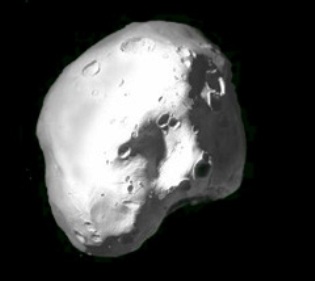 Image: This representation shows the track on the asteroid Juno made by an impact. (David A. Aguilar, Harvard-Smithsonian Center for Astrophysics). |
Vesta (4) | | | | |
Vesta, the asteroid the most glittering with all, carries the name of the Roman goddess of the health. It is the only visible asteroid in the bare eye. Discovered on March 29th, 1807 by Heinrich Olbers, Vesta is the fourth " telluric planet " to be discovered.
Among asteroids, it is the second en masse and the third in size. It turns around the Sun in 3,6 ground years and its mean diameter is about 520 km. The composition of its surface is of basalt nature.
Vesta possesses an enormous crater near its south pole. Vesta is thus a big rock of irregular shape, without track of water with a nucleus formed by iron.
The enormous crater in Vesta's south pole (460 km wide and 13 km deep) is the result of a collision, The astronomers think that 5 % of meteorites found on Earth result from this gigantic shock. | | Image: The image opposite shows Vesta seen by the spatial telescope Hubble. Vesta, with its 520 km in diameters average is much more massive than any other body of this region of the belt of asteroids.| Vesta | | | | | | Dimensions | 578 × 560 × 458 km | | Mass | 2,7 × 1020 kg | | Mean density | 3,4 g/cm3 | | Rotation period | 5,342 h |
Image: Vesta should be visited by the mission of the NASA Dawn left for 2007. | | 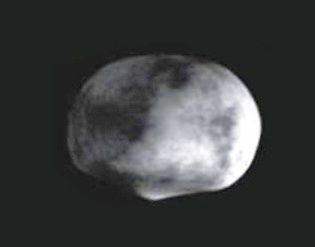 |
Gaspra (951) | | | | |
Gaspra discovered in 1916 by Grigoriy N. Neujamin and observed from 1991 till 1993 by Galileo during its journey towards Jupiter.
It was the first meeting moved closer with a planetoid. Its surface (20x12x11 km) reflects 20 % of the solar light.
Gaspra was glanced through at a 1600 km height.
The Galileo probe activated its cameras 7 hours before this historic meeting and collected details of hardly 50 meters, so confirming that it was about an asteroid of type S, consisted of rocks, iron and common chondrites.
The asteroid Gaspra, is not the one witch worries most the scientists, it is not a part of potential earth-cruisers. | | Image: This image is built from two photos of Gaspra realized by the probe Galileo through clear filters, since a distance of 5300 km, on October 29th, 1991 and 10 minutes, before the passage in the closest point. It presents Gaspra with the most high resolution (approximately 50 m by pixel).
More of 600 craters of more than 100 m of diameter can be seen.
The visible portion here is approximately 18 km in its biggest width. Gaspra is a body of irregular shape about 19 x 12 x 11 km.
The north pole is on the upper left. Gaspra makes a tour on itself counterclockwise in 7 hours.
Credit: NASA | | 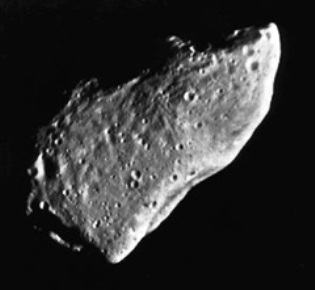 |
Ida (243) | | | | |
Ida (name of a nymph of the Crete) was discovered by the Austrian astronomer Johann Palisa on September 29th, 1884. Ida is in the main belt of asteroids, between March and Jupiter, and is a part of the family of Koronis.
With the asteroid Gaspra, Ida was observed in August, 1993 by the probe Galileo during its journey towards Jupiter.
The probe showed that Ida possesses a small satellite. This one is named S / 1993 243 ) 1 Dactyl.
It was the first discovery of a natural satellite around an asteroid. Ida is a body of shape irregular, placed by the scientists in the class S (looking like rocky or ferro-rocky meteorites). | | It is a member of the family Koronis, supposed to be fragments of the explosion of an asteroid during a collision.
The asteroid Ida and its satellite Dactyl, photographed in 1994 by the probe Galileo at a distance of 10870 kilometers.
Ida (to the left) has a 56 kilometer dimension and Dactyl (the point to the right) is 1.5 kilometers.
Credit: NASA | | 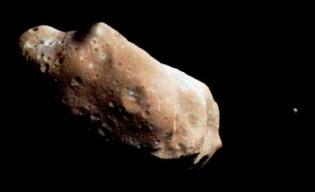 |
Mathilde (253) | | | | |
Mathilde is the asteroid N ° 253. While examining photos sent by the probe NEAR a team of the University of Washington in emitted a surprising hypothesis: the asteroid Mathilde, whose diameter does not exceed 57 km, would be an enormous pumice, of a porosity of more than 50 %. This deduction is pulled by the study of the neighborhoods of three Mathilde's bigger craters.
Seen their diameter (33,4 km for the biggest and 29 km for the others), the original impact has of the very violent being. However, we recover anybody ejected, these faces which usually testify of the pulverizing then the ascent of matter during the shocks.
Now, in spite of a very weak gravity (a thousandth of that of the Earth), Mathilde should present of such structures. | | It is for it that the scientists think that the asteroid has the consistency of a toweling.
It cashes then the knocks by becoming more and more compact.
The astronomers of Washington suggest that the bodies which surrounded the young Sun had to possess the same structure as that of Mathilde.
Image of the asteroid ( 253 ) Mathilde taken at a distance of 1200 km by the probe NEAR after its passage in the closest point on June 27th, 1997. Craters of impact going of 30 km unless 0,5 km are visible. We consider that the dimensions of Mathilde make 50x53x57 km. 60 % of the surface was photographed by NEAR and five craters are more than 20 km in diameter. | | 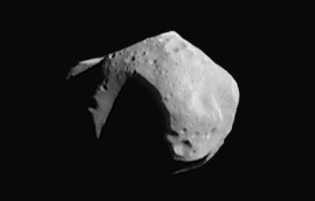 |
Eros (433) | | | | |
433 Eros is an S-type asteroid in the family Amors discovered August 13, 1898 by the German astronomer Gustav Witt, the first of this family to be discovered.
The spacecraft NEAR Shoemaker (Near Earth Asteroid Rendezvous), launched February 17, 1996 by NASA, landed February 12, 2001, engineers at the control center managed the feat to put NEAR on the surface of the asteroid Eros to make a complete mapping of the surface of Eros. The high-resolution images of its surface has been combined with measurements taken by the NEAR laser range finder to get the image to the cons. Eros is a solid one piece to almost uniform composition was formed during the early formative years of our solar system. The probe, when it had not been scheduled to land on the asteroid, has survived long enough to provide an analysis of the composition of the dust covering the asteroid. In December 2002, NASA was unable to reestablish radio contact with the probe. | | Eros | | | | | | | | Dimensions | | 33 x 13 x 13 km | | Mass | | 7,2×1015 kg | | Density | | 2 400 kg/m³ | | Gravity | | 0,0059 m/s² | | Escape Velocity | | 0,0103 km/s | | Period of rotation | | 5h16mn | | Absolute magnitude | | 11,16 | | Albedo | | 0,16 | | Surface temperature | | ≈312 K | | Period of revolution | | 643,219 j (1,76 ua) |
Image: Image of Asteroid (433) Eros taken by the NEAR spacecraft. | | 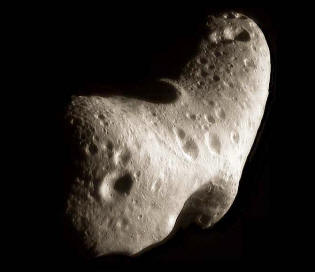 |
 Automatic translation
Automatic translation












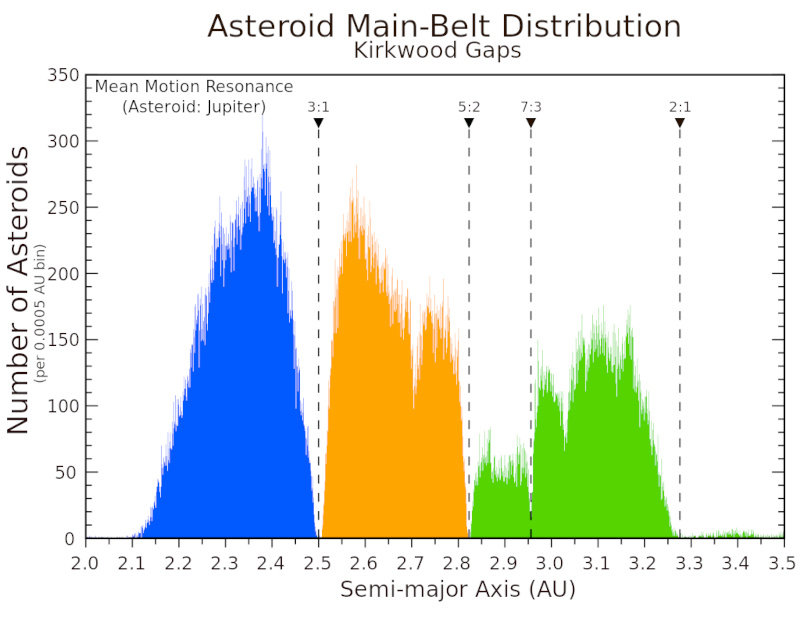 The Kirkwood Gaps in the Main Asteroid Belt
The Kirkwood Gaps in the Main Asteroid Belt
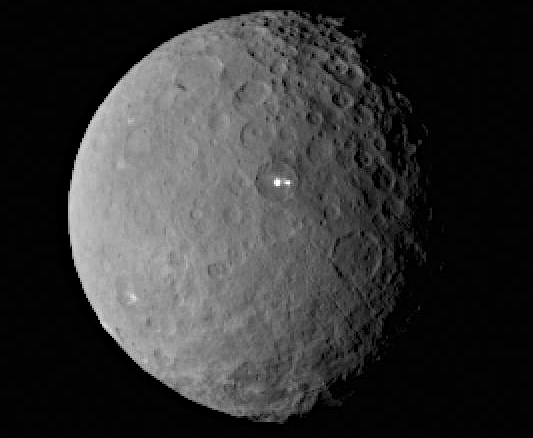 What is the asteroid belt?
What is the asteroid belt?
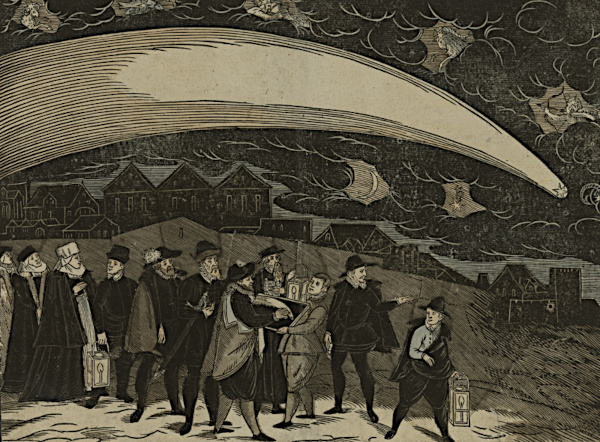 The Great Comet of 1577 Shattered the Crystal Spheres
The Great Comet of 1577 Shattered the Crystal Spheres
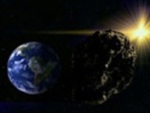 Asteroids, the threat to life...
Asteroids, the threat to life...
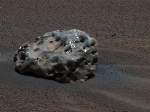 Meteorites, extraterrestrial objects
Meteorites, extraterrestrial objects
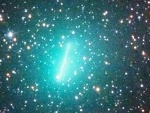 Hartley 2 passes by us, every 6 years
Hartley 2 passes by us, every 6 years
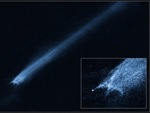 Collision between 2 asteroids
Collision between 2 asteroids
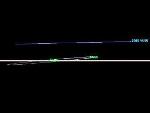 Asteroid shot, ever closer to Earth
Asteroid shot, ever closer to Earth
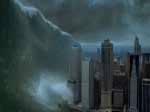 Apophis, the next disaster
Apophis, the next disaster
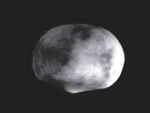 The asteroid Vesta
The asteroid Vesta
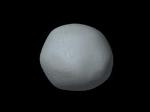 What is an asteroid?
What is an asteroid?
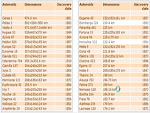 List of asteroids ordered by size
List of asteroids ordered by size
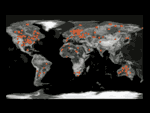 Impact craters on Earth
Impact craters on Earth
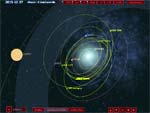 Simulator, the round of near-Earth cruisers
Simulator, the round of near-Earth cruisers
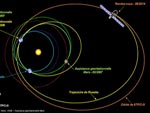 Rosetta has a date with a comet
Rosetta has a date with a comet
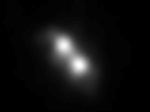 Near-Earth asteroids
Near-Earth asteroids
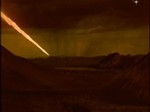 Asteroid 2009 DD45 sends us a sign
Asteroid 2009 DD45 sends us a sign
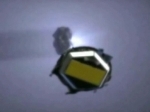 Where does the water on planet Earth come from?
Where does the water on planet Earth come from?
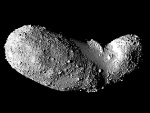 Asteroid or comet?
Asteroid or comet?
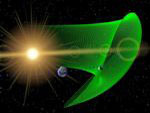 2010 TK7, Earth's Trojan asteroid
2010 TK7, Earth's Trojan asteroid
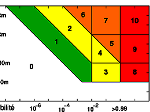 Torino scale asteroid impact risk classification
Torino scale asteroid impact risk classification
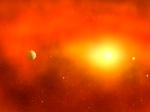 Nice model, the late bombardment
Nice model, the late bombardment
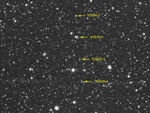 Once again we haven't seen it
Once again we haven't seen it
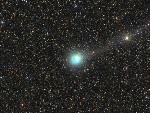 2013 the year of the comets
2013 the year of the comets
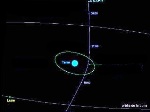 Asteroid 2012 DA14 passed on February 15, 2013
Asteroid 2012 DA14 passed on February 15, 2013
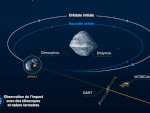 Planetary defense with Didymos and Dimorphos
Planetary defense with Didymos and Dimorphos
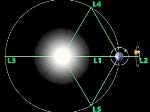 Lagrange points, L1 L2 L3 L4 L5
Lagrange points, L1 L2 L3 L4 L5
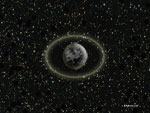 Chariklo and his two amazing rings
Chariklo and his two amazing rings
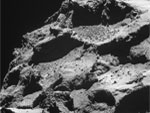 Rosetta and Philae
Rosetta and Philae
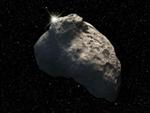 Kuiper Belt Objects
Kuiper Belt Objects
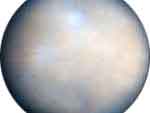 Ceres, the largest asteroid
Ceres, the largest asteroid
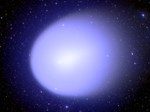 The periodic passage of comets
The periodic passage of comets
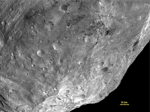 The south pole ripped from the asteroid Vesta
The south pole ripped from the asteroid Vesta
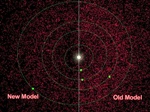 Asteroid sky map brightens up
Asteroid sky map brightens up
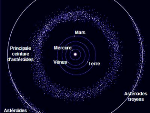 Areas with asteroids and comets
Areas with asteroids and comets
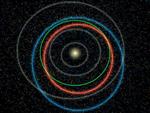 Orbits of dangerous asteroids
Orbits of dangerous asteroids
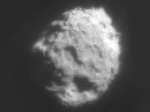 Wandering comets
Wandering comets
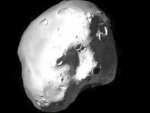 Juno disfigured by a collision
Juno disfigured by a collision
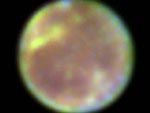 The asteroid Ganymede, near-Earth cruiser and Mars cruiser
The asteroid Ganymede, near-Earth cruiser and Mars cruiser
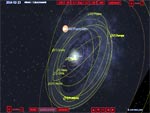 Simulator, the round of asteroids
Simulator, the round of asteroids
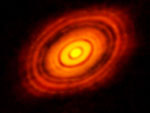 Hell of the Hadean
Hell of the Hadean
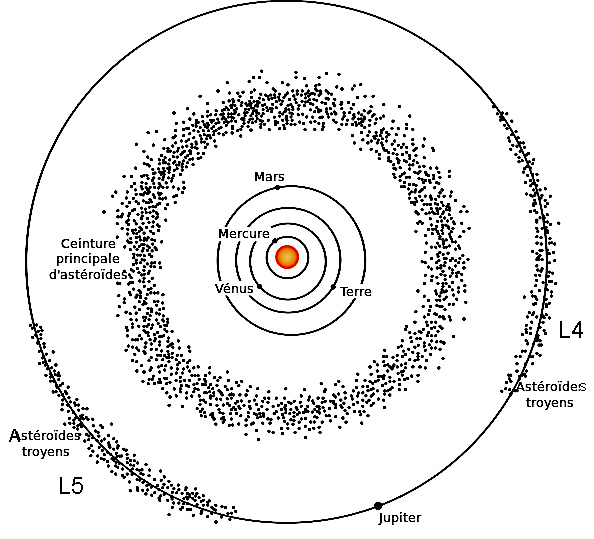 Are there natural satellites of natural satellites?
Are there natural satellites of natural satellites?